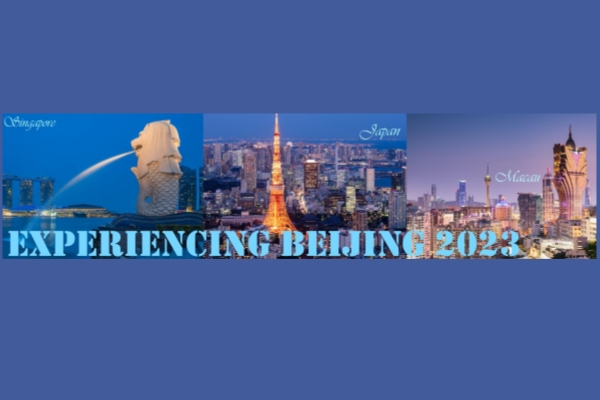Beijing reports 15.3 percent growth in cultural & creative industry
A massive amount of old factory buildings were renovated and transformed to cater for the development of the cultural and creative industry in Beijing, as the city proceeds into an era of urban renewal and cultural innovation. According to data released by the Beijing Municipal Commission of Development and Reform, the city's cultural and creative enterprises above the designated scale saw their revenue rise by 15.3 percent from January to August, leading all industries and becoming a pillar industry for the economic growth of the Chinese capital.
From factories to cultural & creative industrial parks
In the core area of Beijing Central Business District, a former medical equipment factory was transformed into Langyuan Vintage, a cultural and creative industrial park that now houses many well-known enterprises. "The renovation of industrial buildings has created a cultural oasis for us among the skyscrapers," said a designer who settled down in the park.
Similar changes have spread throughout the capital. The Beijing Electric Motor Factory on Jiuxianqiao North Road is being transformed into the "silicon valley" of the cultural and creative industry in China, with some 30 enterprises headquartered there. The Beijing No. 2 Thermal Power Plant located outside Xibianmen Gate was renovated into the Tianning No. 1 Cultural and Technological Innovation Park.
Since the renovations, old factory buildings not only became important hubs for the cultural and creative industries, they are also providing new venues for the cultural life of the public. Many of these cultural and creative parks are granting free entries to the public, creating leisure places for the residents in the surrounding areas.
According to the latest data, Beijing has retired 242 old factories with a total area of more than 25 million square meters. Some of these factories have been transformed into cultural and creative industry parks, while more than 100 others are awaiting renovation.
Policy support for the renovation
The renovation of the old factory buildings is by no means an easy cause. Many old factory properties were registered as industrial land of state-owned enterprises. For the land to be approved for cultural and creative uses, it must go through a series of administrative procedures.
Mei Song, director of the Beijing Cultural and Creative Industry Promotion Center, said the city is constantly seeking policy innovation to support the renovation of old factory buildings. Since the end of last year, the municipal government has issued a number of policies to facilitate the development of the cultural and creative industrial parks in the capital.
In addition, to streamline the approval procedures of the renovation projects, relevant departments of the municipal government have formulated the implementation details involved in every aspect of the project. Mei said Beijing has launched a model park initiative earlier this year to promote the standardized development of the cultural and creative industry parks, and the first batch of model parks will be announced at the end of the year.
Innovative approaches to stimulating investment
At the 7th China Cultural & Financial Innovation Summit held last week, the Beijing Cultural and Creative Industry Promotion Center released this year's list of cultural and creative enterprises in Beijing with the most investment value. As of now, the aggregate amount of financing disclosed by the 220 companies in the first six editions of the ranking totals more than 30 billion yuan (US$4.31 billion).
The city also worked to stimulate private investment using government funds. Since 2008, the Beijing Municipal Commission of Development and Reform has adopted direct investment and subsidies in accordance with the characteristics of different industrial projects, and supported a number of representative parks and projects such as the Beijing Arts and Crafts Museum. In 2016, making further innovation on fixed asset investment, the municipal government injected 500 million yuan to the Beijing Cultural Investment Development Group, which eventually attracted six times of that funding.
Apart from government financial capital, private capital also played an important role in supporting the development of the cultural and creative industry. As of the end of August this year, there were 99 A-share listed cultural and creative enterprises in the city, and the loan balance of the industry was 153.77 billion yuan. According to reports from third-party organizations, in the first half of this year, the city's "new third board" (National Equities Exchange and Quotation) listed cultural and creative enterprises raised 720 million yuan, accounting for about one third of the national total, while cultural enterprises' private equity financing totaled 8.39 billion yuan, representing about a quarter of the national total.

 Responsibilities of the SOCAAC
Responsibilities of the SOCAAC Experiencing Beijing 2023
Experiencing Beijing 2023